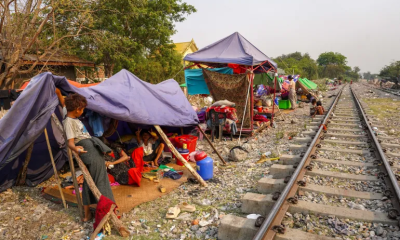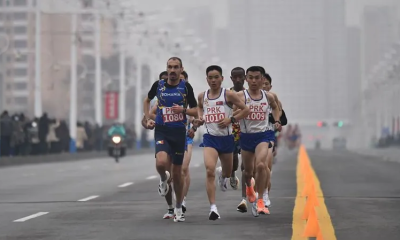Features
Behind the COVID scene

There is desperation and a degree of panic among the populace of the Pearl. Mainly due to a bungled vaccination program by those in charge of it. The blame however is seemingly being transferred to doctors and other members of the medical profession. This exacerbates the “King Kekilla” type of situation that prevails not only among those who govern but among the people as well. After all those bizarre verdicts issued by that demented ruler of legend, were accepted by the people, weren’t they?Recently I was granted access to a WhatsApp thread put up by scientists and doctors based in the Pearl who are contacting peers in all parts of the world and asking for input at their level of knowledge. The questions range from testing methods and their efficacy to treatment and how it can have the best outcomes for individual patients. This conversation is fascinating even to a relatively uneducated layman such as myself and what must be appreciated is the high level of input and above all the extreme level of commitment from these brilliant individuals. Access to this thread is a privilege and was granted to me by a researcher based in the Auckland University who had been contacted by the initiators of the thread. The idea was that I would use my column and the good offices of the editor of this newspaper to propagate this aspect of the battle against the virus and these “unsung heroes” (my choice of words).
Their biggest lament however is that no one in POWER listens to them or takes any notice of what they are saying! A secondary one is the lack of funds required for 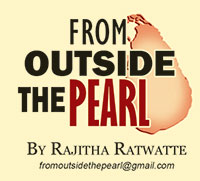 specialized equipment that will make the testing process quicker and more accurate. Staff training is also a much-needed feature as testing tracing and isolation are among the most influential features reported in Covid-19 control. Surely this is an unacceptable situation? This is what the public should address and rectify using all means available to them. Follow directives only from professionals with credentials and DO NOT listen to anyone else. Unfortunately, even media outlets and newspapers of the Pearl seem to publish articles of pure fiction and in some cases headlines that must have been dreamt up by their editors. Another tragic fact is that these dedicated scientists are being blamed for anything and everything that goes wrong when their advice is disregarded! This sort of thing can only happen in the “land like no other”. There is a great deal of discouragement resulting from this attitude and I fear we are going to lose many members from this the most vital arm of our battle against the virus.
specialized equipment that will make the testing process quicker and more accurate. Staff training is also a much-needed feature as testing tracing and isolation are among the most influential features reported in Covid-19 control. Surely this is an unacceptable situation? This is what the public should address and rectify using all means available to them. Follow directives only from professionals with credentials and DO NOT listen to anyone else. Unfortunately, even media outlets and newspapers of the Pearl seem to publish articles of pure fiction and in some cases headlines that must have been dreamt up by their editors. Another tragic fact is that these dedicated scientists are being blamed for anything and everything that goes wrong when their advice is disregarded! This sort of thing can only happen in the “land like no other”. There is a great deal of discouragement resulting from this attitude and I fear we are going to lose many members from this the most vital arm of our battle against the virus.
The single most powerful reason why Aotearoa – New Zealand is where it is with regard to controlling the virus to date is the fact that ALL decision-making with regard to controlling the virus was handed over to science. The scientists and their requirements were followed to the letter. Screams from the political opposition about the destruction of the economy that would result from the lockdown we underwent were disregarded by wise and committed leadership. The physical welfare of the people was paramount, and it worked. We had a fiscal budget presented in parliament last week and guess what, the economy is in much better shape than expected. So much better in fact that the welfare payments or “dole” as it used to be known have been increased all round. This will bring relief not only to the poorest of the poor but to a large slice of society that collects some sort of payment from the welfare state that is New Zealand.
Now that the virus is rampant, and I use the word rampant with a view to instilling real caution rather than panic, members of my family have been affected. They have ended up in quarantine centres, hospitals, and even in intensive care units. I have had to dig up my old contacts among the medical profession to inquire as to how the treatment is going and in some cases for a real prognosis on the patient. The medical care is exemplary as is the norm in the government hospitals but a disconcerting bit of news from a young and dedicated doctor in charge of the epidemic is that there are no incentives or motivating factors available for the minor staff. The attendants and the ambulance drivers who work all hours of the day could use things like packets of biscuits to supplement their meals and re-loads on their mobile phones to allow them to communicate with their families. Simple things that the companies in these fields could provide without even feeling it. But have they? If not, WHY? Is it because the relevant management and CEOs are cowering under their beds in fear, and cannot be bothered to find out what they can do within their means to help with this war? Does it take an individual living in a foreign country to find out and inform them?
What about those massive profit-making institutions empowered by the law of the land to rob the population, Banks? What have they done to contribute towards fighting this war against the Virus? Banks do have awards for the best bank, unfortunately, they don’t have one for the worst bank, as I have a nomination in mind. This particular bank operating from a massive tower built no doubt with the profits they made by exploiting their customers, would win hands down if there was a competition for the worst bank, not only in the Pearl but probably in the World! That is another story, for another day but why don’t they contact the scientists and give them the machinery they need to fight this battle? The sums involved would only be a fraction of the billions of rupees they declare as profits, every year. If anyone is interested, it will be my pleasure to give them the contact details of these selfless and dedicated heroes that no one knows about.These are the real heroes and the people who are absolutely vital to help us overcome Covid-19. Why are they being sidelined and even scorned and blamed for situations that have arisen due to bungling by politicians and bureaucrats? There may be a communication problem as their specialized knowledge and inherent modesty sometimes prevents them from marketing themselves as loudly and as “effectively” as required by a nation that is used to being governed by the laws of King Kekilla.
Features
Sri Lanka’s Foreign Policy amid Geopolitical Transformations: 1990-2024 – Part I
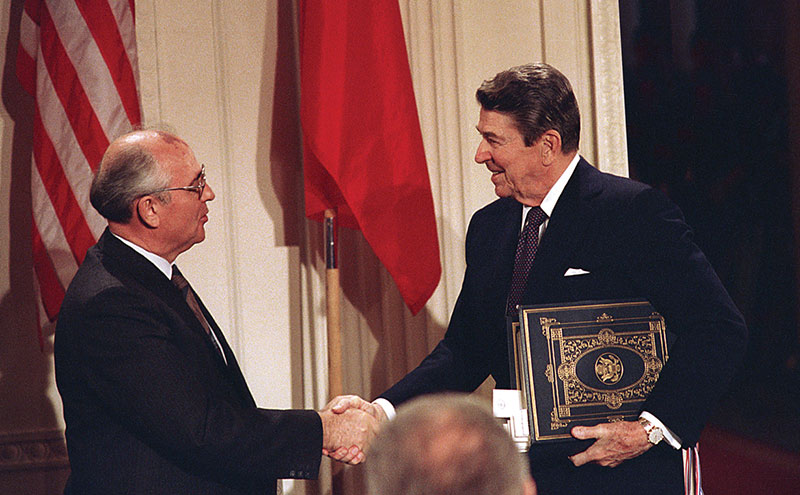
Sri Lanka’s survival and independence have historically depended on accurately identifying foreign policy priorities, selecting viable strategies as a small island state, and advancing them with prudence. This requires an objective assessment of the shifting geopolitical landscape through a distinctly Sri Lankan strategic lens. Consequently, foreign policy has been central to Sri Lanka’s statecraft, warranted by its pivotal location in the Indian Ocean—adjacent to South Asia yet separated by a narrow stretch of water.
Amid pivotal geopolitical transformations in motion across South Asia, in the Indian Ocean, and beyond, the formulation and implementation of Sri Lanka’s foreign policy has never been more critical to its national security. Despite the pressing need for a cohesive policy framework, Sri Lanka’s foreign policy, over the past few decades, has struggled to effectively respond to the challenges posed by shifting geopolitical dynamics. This article examines the evolution of Sri Lanka’s foreign policy and its inconsistencies amid shifting geopolitical dynamics since the end of the Cold War.
First
, the article examines geopolitical shifts in three key spaces—South Asia, the Indian Ocean, and the global arena—since the end of the Cold War, from Sri Lanka’s strategic perspective. Building on this, second, it analyses Sri Lanka’s foreign policy responses, emphasising its role as a key instrument of statecraft. Third, it explores the link between Sri Lanka’s foreign policy dilemmas during this period and the ongoing crisis of the post-colonial state. Finally, the article concludes that while geopolitical constraints persist, Sri Lanka’s ability to adopt a more proactive foreign policy depends on internal political and economic reforms that strengthen democracy and inclusivity.
Shifting South Asian Strategic Dynamics
Geopolitical concerns in South Asia—Sri Lanka’s immediate sphere—take precedence, as the country is inherently tied to the Indo-centric South Asian socio-cultural milieu. Sri Lanka’s foreign policy has long faced challenges in navigating its relationship with India, conditioned by a perceived disparity in power capabilities between the two countries. This dynamic has made the ‘India factor’ a persistent consideration in Sri Lanka’s strategic thinking. As Ivor Jennings observed in 1951, ‘India thus appears as a friendly but potentially dangerous neighbour, to whom one must be polite but a little distant’ (Jennings, 1951, 113).The importance of managing the ‘India Factor’ in Sri Lankan foreign policy has grown further with India’s advancements in military strength, economic development, and the knowledge industry, positioning it as a rising global great power on Sri Lanka’s doorstep.
India’s Strategic Rise
Over the past three decades, South Asia’s geopolitical landscape has undergone a profound transformation, driven by India’s strategic rise as a global great power. Barry Buzan (2002:2) foresees this shift within the South Asian regional system as a transition from asymmetric bipolarity to India-centric unipolarity. India’s continuous military advancements have elevated it to the fourth position in the Global Firepower (GFP) index, highlighting its formidable conventional war-making capabilities across land, sea, and air (Global Firepower, 2024). It currently lays claims to being the world’s third-largest military, the fourth-largest Air Force, and the fifth-largest Navy.
India consistently ranks among the fastest-growing major economies, often surpassing the global average. According to Forbes India, India is projected to be the world’s fifth-largest economy in 2025, with a real GDP growth rate of 6.5% (Forbes, January 10, 2025). India’s strategic ascendance is increasingly driven by its advancements in the knowledge industry. The country is actively embracing the Fourth Industrial Revolution (4IR) and emerging as the Digital Public Infrastructure (DPI) hub of South Asia. However, India’s rise has a paradoxical impact on its neighbours. On one hand, it offers them an opportunity to integrate into a rapidly expanding economic engine. On the other, it heightens concerns over India’s dominance, leaving them feeling increasingly overshadowed by the regional giant.
Despite significant geo-strategic transformations, the longstanding antagonism and strategic rivalry between India and Pakistan have persisted into the new millennium, continuing to shape South Asia’s security landscape. Born in 1947 amid mutual hostility, the two countries remained locked in a multi-dimensional conflict encompassing territorial disputes, power equilibrium, threat perceptions, accusations of interference in each other’s domestic affairs, and divergent foreign policy approaches. The acquisition of nuclear weapons by both countries in 1998 added a new dimension to their rivalry.
The SAARC process has been a notable casualty of the enduring Indo-Pakistani rivalry. Since India’s boycott of the Islamabad Summit in response to the 2016 Uri attack in Kashmir, the SAARC process has remained in limbo. Countries like Sri Lanka, which seek to maintain equally amicable relations with both India and Pakistan, often find themselves in awkward positions due to the ongoing rivalry between them. One of the key challenges for Sri Lanka’s foreign policy is maintaining strong relations with Pakistan while ensuring its ties with India remain unaffected. India now actively promotes regional cooperation bodies in South Asia, excluding Pakistan, favouring broader frameworks such as BIMSTEC. While Sri Lanka can benefit greatly from engaging with these regional initiatives, it must carefully navigate its involvement to avoid inadvertently aligning with India’s efforts to contain Pakistan. Maintaining this balance will require sharp diplomatic acumen.
India’s expansive naval strategy, especially its development of onshore naval infrastructure, has positioned Sri Lanka within its maritime sphere of influence. As part of the Maritime Infrastructure Perspective Plan (MIPP) launched in 2015 to enhance operational readiness and surveillance capabilities, India is developing an alternative nuclear submarine base for the Eastern Command under Project Varsha (Deccan Chronicle, 22.11.2016). This base is located in Rambilli village, 50 km southwest of Visakhapatnam and 1,200 km from Colombo (Chang, 2024). Additionally, INS Dega, the naval air base at Visakhapatnam, is being expanded to accommodate Vikrant’s MiG-29K and Tejas fighter aircraft.
Another key strategic development in India’s ascent that warrants serious attention in Sri Lanka’s foreign policy formulation is India’s progress in missile delivery systems (ICBMs and SLBMs) and nuclear-powered submarines. In 1998, India made it clear that its future nuclear deterrence would be based on a nuclear triad consisting of land-based Intercontinental Ballistic Missiles (ICBMs), submarine-launched ballistic missiles (SLBMs), and strategic bombers (Rehman, 2015). Since then, India has steadily advanced in this direction. The expansion of India’s missile delivery systems, including ICBMs and SLBMs, serves as a reminder that Sri Lanka exists under the strategic shadow of a major global power.
The development of India’s nuclear-powered ballistic missile submarines (SSBNs) accelerated after 2016. The first in this class, INS Arihant (S2), was commissioned in August 2016, followed by the launch of INS Arighat in November 2021. Designed for strategic deterrence, INS Arighat is equipped to carry the Sagarika K-4 submarine-launched ballistic missiles (SLBMs), with a range of 3,500 kilometers, as well as the K-5, a long-range SLBM capable of reaching 5,000 kilometers. The submarine is based at INS Varsha (Deb, 2021).
India has significantly advanced its missile delivery systems, improving both their range and precision. In 2021, it successfully tested the Agni-5, a nuclear-capable intercontinental ballistic missile with a range of 5,000 kilometers. On March 11, 2024, India joined the ranks of global powers possessing Multiple Independently Targetable Re-entry Vehicle (MIRV) technology (The Hindu, January 4, 2022). These advancements elevate the Bay of Bengal as a pivotal arena in the naval competition between India and China, carrying profound political and strategic implications for Sri Lanka, which seeks to maintain equally friendly relations with both countries.
Further, India’s remarkable strides in space research have cemented its status as a global power. A defining moment in this journey was the historic lunar landing on 23 August 2023, when Chandrayaan-3 successfully deployed two robotic marvels: the Vikram lander and its companion rover, Pragyan. They made a graceful touchdown in the Moon’s southern polar region, making India the fourth nation to achieve a successful lunar landing. This milestone has further reinforced India’s position as an emerging great power, enhancing its credentials to assert itself more confidently in South Asian, Indian Ocean, and global power dynamics.
India envisions a stable and secure South Asia as essential to its emergence as a great power in the Indian Ocean and global strategic arenas. However, it does not consider Pakistan to be a part of this stability that it seeks. Accordingly, when India launched the ‘Neighbourhood First Policy’ in 2008 to strengthen regional ties, Pakistan was excluded. India’s ‘Neighbourhood First Policy’ gained renewed momentum after 2015 under Prime Minister Narendra Modi. His approach to South Asia is embedded in a broader narrative emphasising the deep-rooted cultural, economic, and social exchanges between India and other South Asian countries over centuries. India’s promotion of heritage tourism, particularly the ‘Ramayana Trail’ in Sri Lanka, should be viewed through this strategic lens as part of its broader strategic narrative.
Evolving Indian Ocean Geo-political Dynamics
The Indian Ocean constitutes the next geopolitical frame for Sri Lanka’s foreign policy. The Indian Ocean is a huge bay bordered by the Afro-Asian landmass and Australia on three sides and the South Asian peninsula extends into the Indian Ocean basin centrally. Situated at the southern tip of South Asia, Sri Lanka extends strategically into the heart of the Indian Ocean, shaping its geopolitical significance and strategic imperatives for maintaining sovereignty. Historically, Sri Lanka has often been caught in the power struggles of extra-regional actors in the Indian Ocean, repeatedly at the expense of its independence.
Sri Lanka’s leadership at the time of independence was acutely aware of the strategic significance of the Indian Ocean for the nation’s survival. The first Prime Minister D.S. Senanayake, who was also the Minister of Defence and External Affair, stated in Parliament that: “We are in a dangerous position, because we are on one of the strategic highways of the world. The country that captures Ceylon would dominate the Indian Ocean. Nor is it only a question of protecting ourselves against invasion and air attack. If we have no imports for three months, we would starve, and we have therefore to protect our sea and air communications” (Hansard’s Parliamentary Debates, House of Representative. Vol. I, 1 December 1947, c. 444)
As naval competition between superpowers during the Cold War extended to the Indian Ocean, following the British naval withdrawal in the late 1960s, Sri Lanka, under Prime Minister Sirimavo Bandaranaike, played a key diplomatic role in keeping the region free from extra-regional naval rivalry by mobilising the countries that were members of the Non-Aligned Movement (NAM). In 1971, Sri Lanka sponsored a proposal at the UN General Assembly to establish the Indian Ocean as a Peace Zone (IOPZ). While the initiative initially gained traction, it stalled at the committee stage and ultimately lost momentum.
The maritime security architecture of the Indian Ocean entered a new phase after the end of the Cold War. The United States became the single superpower in the Indian Ocean with an ocean-wide naval presence bolstered by the fully fledged Diego Garcia base. Correspondingly, the regional strategic linkages that evolved in the context of the Cold War were eventually dismantled, giving way to new strategic relationships. Additionally, three key developments with profound implications for Sri Lanka should be noted: India’s projection of political and naval power into the deeper Indian Ocean, China’s rapid economic and military rise in the region, and the entry of other extra-regional powers into Indian Ocean politics. Although Sri Lanka adopted a broader strategic perspective and a more proactive foreign policy in the 1970s, its approach to geopolitical developments in the Indian Ocean in the post-Cold War era became increasingly shaped by domestic challenges—particularly countering the LTTE threat and addressing post-war exigencies.
India’s Expanding Naval Diplomatic Role in the Indian Ocean
Parallel to its strategic rise, India has intensified its engagement in the broader strategic landscape of the Indian Ocean with renewed vigor. This expansion extends beyond its traditional focus on the South Asian strategic theatre, reflecting a more assertive and multidimensional approach to regional security, economic connectivity, and maritime diplomacy. India’s active participation in multilateral security frameworks, infrastructure investments in critical maritime hubs and strategic alignments with major global powers signify its role in the changing naval security architecture of the Indian Ocean. India’s shifting strategic posture in the Indian Ocean is reflected in the 2015 strategy document Ensuring Secure Seas: Indian Maritime Security Strategy. It broadens the definition of India’s maritime neighbors beyond those sharing maritime boundaries to include all nations within the Indian Ocean region (Ensuring Secure Seas, p. 23).
In 2015, Indian Prime Minister Narendra Modi launched his signature Indian Ocean diplomacy initiative, Security and Growth for All in the Region (SAGAR) to foster trust and transparency, uphold international maritime norms, respect mutual interests, resolve disputes peacefully, and enhance maritime cooperation. Strategic engagement with the littoral states in the Indian Ocean region, especially Sri Lanka, the Maldives, Seychelles, and Mauritius and Madagascar has emerged as a key component of India’s Indian Ocean naval diplomacy.
The Seychelles archipelago, located approximately 600 miles east of the Diego Garcia base, holds particular significance in India’s maritime strategy. During Prime Minister Narendra Modi’s official visit to Seychelles in March 2015, India and Seychelles signed four agreements. A key strategic outcome of the visit was Seychelles’ agreement to lease Assumption Island, one of its 115 islands, to India—a move that reinforced Seychelles’ alignment with India’s broader naval diplomacy in the Indian Ocean
Similarly, Mauritius holds a central position in India’s naval diplomacy in the Indian Ocean. During Prime Minister Modi’s visit to Mauritius in March 2015, India signed a Memorandum of Understanding with Mauritius to establish a new base on North Agalega Island, a 12-kilometer-long and 1.5-kilometer-wide Island. The base is crucial for air and surface maritime patrols in the southwest Indian Ocean. It will also serve as an intelligence outpost. In September 2016, defense and security cooperation between India and Mauritius deepened alongside the signing of the ‘Comprehensive Economic Cooperation Partnership Agreement’ (CECPA).
India’s expanding strategic interests across the Indian Ocean are reflected in its growing economic, educational, and defense collaborations with Madagascar. In 2007, India established its first overseas listening post in northern Madagascar to monitor shipping activities and intercept marine communications in the Indian Ocean. This initiative provided India with a naval foothold near South Africa and key sea-lanes in the southwestern Indian Ocean. The significance of India’s defense ties with Madagascar is further highlighted by Madagascar’s participation in China’s Belt and Road Initiative (BRI). As a crucial hub along the Maritime Silk Road connecting Africa, Madagascar’s strategic importance is underscored in the broader geopolitical landscape.
Another element of India’s expanding naval diplomacy in the Indian Ocean is its participation in both unilateral and multilateral anti-piracy operations. India’s commitment to regional security was reinforced in 2008 when it established a ‘Strategic Partnership’ with Oman, securing berthing and replenishment facilities for its navy, along with a strategically significant listening post in the Western Indian Ocean. India’s naval presence in the Arabian Gulf gains additional significance amid reports of a new Chinese naval base in Djibouti and recent submarine deployments. Successful anti-piracy missions in the western Indian Ocean underscore India’s growing influence in the region’s evolving naval security architecture.
India increasingly views its vast Diaspora as a soft power tool to bolster its status as an Indian Ocean power. In June 2014, it launched the Mausam project to reinforce its cultural ties across the region, showcasing its heritage, traditions, and contributions to global arts, literature, cinema, yoga, and cuisine. This initiative complements India’s expanding naval diplomacy and strategic presence in the Indian Ocean. Over the years, it has established listening facilities, airfields, and port infrastructure in key locations such as northern Madagascar, Agaléga Island (Mauritius), and Assumption Island (Seychelles). This has led India Today to ask: “Could this mark the emergence of an Indian ‘String of Flowers’ to counter China’s ‘String of Pearls’?” (The be continued)
by Gamini Keerawella
Features
Greener Pastures, Mental Health and Deception in Marriage:
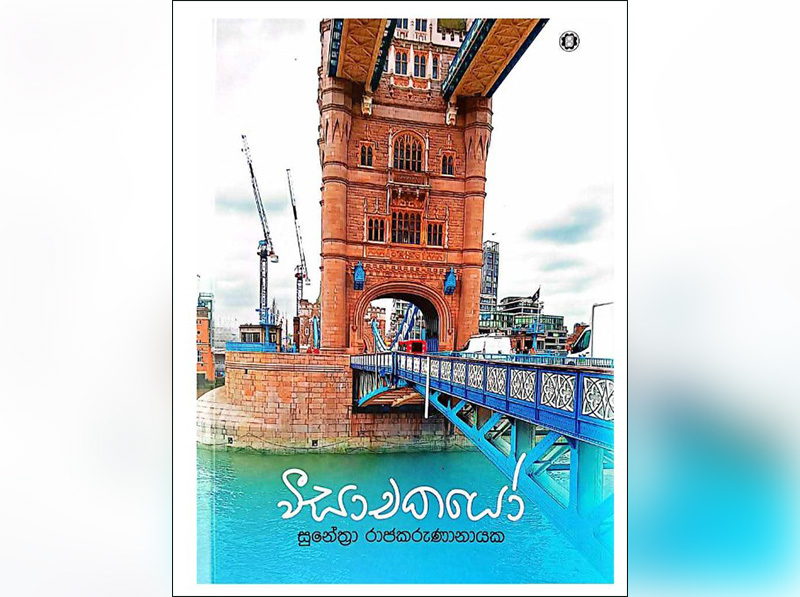
Exploring Sunethra Rajakarunanayake’s Visachakayo
Sunethra Rajakarunanayake’s Sinhala novel Visachakayo (published in 2023) is a thriller in its own sense due to its daring exploration of social themes that modern Sinhala writers fail to touch. To me, the novel is a mosaic that explores pressing issues that middle-class Sri Lankans go through in the 21st Century. The narrative is seen from the perspective of Akshara, a Tamil girl whom the reader first meets in an infamous ‘Visa Queue’ to get her passport to go to England.
Akshara lives with her grandmother ‘Ammamma’ and her aunt ‘Periyamma’ (the younger sister of her mother). Both Ammamma and Periyamma look after her in the absence of her mother, Chinthamani who passed away a long time ago. Akshara’s father lives in Jaffna, with the kids of the second marriage. Later, we are told that Akshara’s father had to marry the second wife due to the loss of his wife’s first husband, who was an LTTE cadre. The second marriage of men seems to be a common theme in the novel due to their commitments to the family as an act of duty and honour.
The most iconic character in the novel is Preethiraj, ‘the man with a big heart’ who functions as a father figure to the other characters in the novel. It is through Preethiraj’s memory that the reader becomes aware of sociological themes in the novel: displacement and immigration, the institution of marriage and mental health issues. Preethiraj (fondly known as Preethi) is the son of Pushpawathi, the second wife of Akshara’s grandfather. Preethi goes to Royal College, but he has to relocate to Jaffna in 1958. Preethi endures social injustice in both public and private spheres. His studious sister, a medical student, labels him as a ‘lunatic’, while his mother condemns him as the ‘odd one’.
The novel intersects between the three themes: immigration and displacement, mental health issues and the institution of marriage. Almost all the characters have to go through displacement, suffer from intricacies of love laws and marriage rules like in The God of Small Things by Arundathi Roy. The writer offers a nuanced analysis of these three themes. For example, take mental health issues. The novel portrays a spectrum of mental health issues, such as schizophrenia, psychosis, Othello Syndrome, depression, autism and even malingering. At times, the representation of such ailments is extremely sarcastic:
“Hm… Canadian citizenship is an easy solution to secure those opportunities. However, unless I am asked to intervene, I will not meddle with their affairs. The son of one of my friends was introduced to a pretty girl. They liked her, not because of her money, but because of her looks and her ability to play the piano. But later, they discovered she has schizophrenia. Now their son follows whatever she says to save the marriage. My friend says she has lost her son” (p.20).
“Those opportunities” refer to material wealth including money and property in Colombo. Here, Rajakarunanayake does not fail to capture the extreme materialism and consumerism. However, in general, her representation of human follies is extremely humane.
The title ‘Visachakayo’ is another interesting coinage that reflects the plight of Sri Lankans who migrate to the ‘global north’ in search of greener pastures. Akshara’s friend, Subhani, who has migrated to England, explains that the term ‘Visachaya’ captures the in-between status of immigrants who are waiting for PR in a foreign country. Subhani mockingly says that they are equal to beggars who beg for visas. Subhani’s coinage and other accounts of Sri Lankan immigrants in England, the novel shows how difficult it is for an immigrant from the ‘global south’ to fight for a living in a country like England where immigrants come to resolve their financial struggles back home.
The novel is an eye-opener in many ways. First, it is an attempt to bridge the gap caused by the Sinhala-Tamil ethnic strife. It is also a cultural mosaic that captures both the joys and sorrows of Sinhala, Tamil and Burgher families in Sri Lanka. The novel also delves into mental health issues, categorically tied to marriage, a daring task even for a seasoned writer. However, Rajakarunanayake’s writing style compels the reader to adopt a more humane and empathetic approach towards individuals grappling with mental health challenges at various stages of their lives. The linguistic technique of using ‘ne’ tag at the end of sentences creates a conversational tone, making the narrative as if it is a conversation between a therapist and a patient. Her writing style also resembles that of Sri Lankan and Indian diasporic writers, a style that is used when writing about the motherland in exile, of which food becomes a critical trope in the narrative that unites the characters who live in exile.
Rajakarunanayake has done a commendable job in the representation of social issues, making this novel a must-read for anyone who is interested in researching social dynamics of contemporary Sri Lanka. It soon needs to be translated into English which will offer a unique experience to Sri Lankan English and international readers. A good book is something that affects the reader. Visachakayo has this quality, and it makes the reader revisit the past, reflect on the present and anticipate the future with hope for humanity just as Preethi does regardless of hardships he endured in the theatre of life.
By C. M. Arsakulasuriya
Features
A strategy for Mahaweli authority to meet future challenges amidst moves to close it down
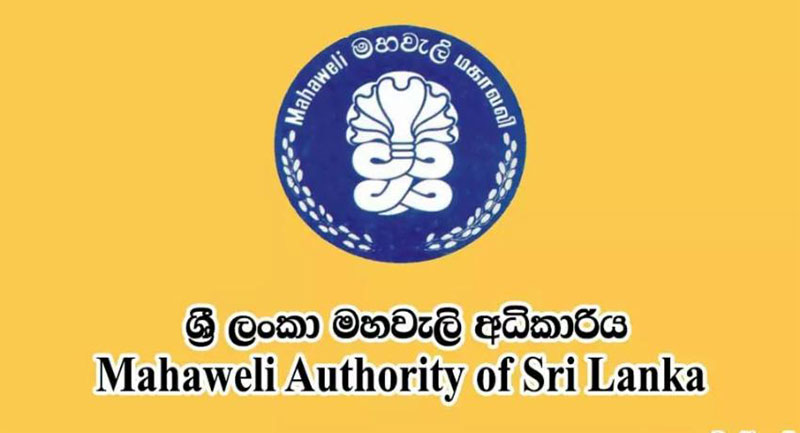
The potential available in lands under Mahaweli Project, which cover about one third of farming areas of the Dry Zone, could easily help the country become self-sufficient in healthy foods, provided it is managed properly. However, at present, the main focus of the Mahaweli Authority of Sri Lanka (MASL) is mainly on Operation & Maintenance of Canal network feeding the farms. Main purpose of the Mahaweli Restructuring & Rehabilitation Project (MRRP) funded by the World Bank in 2000 was to diversify that objective to cover enhancement of agriculture aspects also. System H Irrigation Systems covering about 20,000 Hectares commanded under Kalawewa Tank located in the Anuradhapura District was used as a pilot area to initiate this effort. However, only the Canal Rehabilitation component of the MRRP was attended because of the government policy at that time. Restructuring component is still awaiting to be completed. Only, a strategy called Water Quota was introduced under the MRRP to initiate the restructuring component. However, the management restructuring required addressing the agriculture component expected under MRRP is still not attended.
Propose Strategy
Total length of the canal network which needs seasonal maintenance is about 1,000 Km in a typical large-scale irrigation project such as Kalawewa. Main role of the Resident Project Managers (RPM) appointed to manage such projects should be to enhance the food production jointly with the Farmer Organizations. Therefore, the abbreviation used for RPM should be redefined as Resident Production Manager. The role of a Production Manager is not limited to maintenance of canal networks as adapted presently. In the current production phase, Irrigation projects should be perceived as a Food Producing “Factory” – where water is the main raw material. Farmers as the owners of the factory, play the role of the labour force of the factory. The Production Manager’s focus should be to maximize food production, deviating from Rice Only Mode, to cater the market needs earning profits for the farmers who are the owners of the “factory”. Canal systems within the project area which need regular maintenance are just “Belts” conveying raw materials (water) in a Typical Factory.
Required Management Shift
In order to implement the above management concept, there is a need for a paradigm shift in managing large scale irrigation projects. In the new approach, the main purpose of managing irrigation systems is to deliver water to the farm gate at the right time in the right quantity. It is a big challenge to operate a canal network about 1000 KM long feeding about 20,000 Hectare in a typical Irrigation System such as Kalawewa.
It is also very pathetic to observe that main clients of irrigation projects (farmers providing labor force) are now dying of various diseases caused by indiscriminate use of agrochemicals. Therefore, there is a need to minimize the damages caused to the ecosystems where these food production factories are located. Therefore, the management objectives should also be focused on producing multiple types of organically grown crops, profitably without polluting the soil and groundwater aquifers causing diseases like Kidney Failures.
Proposed Management Structure
Existing management staff should either be trained or new recruitments having Production Engineering background, should be made. Water should be perceived as the most limited input, which needs to be managed profitably jointly with the farming community. Each Production Manager could be allocated a Fixed Volume of water annually, and their performance could be measured in terms of $s earned for the country per Unit Volume of water, while economically upgrading a healthy lifestyle of the farmers by using climate smart agriculture.
In addition to the government salary, the production management staff should also be compensated in the form of incentives, calculated in proportion to income generated by them from their management areas. It should be a Win-Win situation for both farmers as well as officers responsible for managing the food production factory. Operation of the Main Canal to cater flexible needs of each factory is the main responsibility of the Resident Production Manager. In other countries, the term used to measure their performance is $ earned per gallon of water to the country, without damaging the ecosystem.
Recent Efforts
Mahaweli Authority introduced some of the concepts explained in this note during 2000 to 2006, under MRRP. It was done by operating the Distributary canals feeding each block as elongated Village Tanks. It was known as the Bulk Water Allocation (BWA) strategy. Recently an attempt was made to digitize the same concept, by independently arranging funds from ICTA / World Bank. In that project, called Eazy Water, a SMS communication system was introduced, so that they can order water from the Main Reservoir by sending a SMS, when they need rather; than depend on time tables decided by authorities as normally practiced.
Though the BWA was practiced successfully until 2015, the new generation of managers did not continue it beyond 2015.
Conclusion
The recent Cabinet decision to close down the MASL should prompt the MASL officers to reactivate the BWA approach again. Farmer Organisations at the distributary canal level responsible for managing canal networks covering about 400 Hectares can be registered as farmer cooperatives. For example, there are about 50 farmer cooperatives in a typical irrigation project such as Kalawewa. This transformation should be a gradual process which would take at least two years. I am sure the World Bank would definitely fund this project during the transition period because it is a continuation of the MRRP to address the restructuring component which was not attended by them in 2000 because of government policy at that time. System H could be used as a pilot demonstration area. Guidelines introduced under the MRRP could be used as tools to manage the main canal. World Bank funded Agribusiness Value Chain Support with CSIAP (Climate Smart Irrigated Agriculture Project) under the Ministry of Agriculture which is presently in progress could also provide necessary guidelines to initiate this project.
by Eng. Mahinda Panapitiya
Engineer who worked for Mahaweli Project since its inception
-

 Business15 hours ago
Business15 hours agoColombo Coffee wins coveted management awards
-

 Features2 days ago
Features2 days agoStarlink in the Global South
-

 Business3 days ago
Business3 days agoDaraz Sri Lanka ushers in the New Year with 4.4 Avurudu Wasi Pro Max – Sri Lanka’s biggest online Avurudu sale
-

 Business4 days ago
Business4 days agoStrengthening SDG integration into provincial planning and development process
-

 Business3 days ago
Business3 days agoNew SL Sovereign Bonds win foreign investor confidence
-

 Sports5 days ago
Sports5 days agoTo play or not to play is Richmond’s decision
-

 Features2 days ago
Features2 days agoModi’s Sri Lanka Sojourn
-

 Sports4 days ago
Sports4 days agoNew Zealand under 85kg rugby team set for historic tour of Sri Lanka




